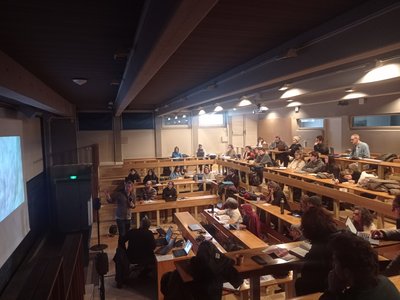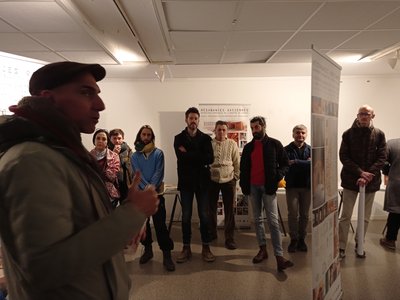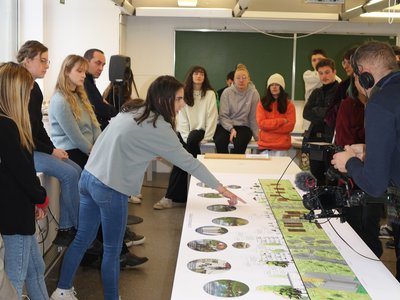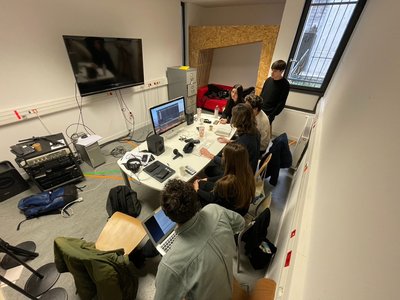This Winter School was an opportunity to study, grasp and even experiment with these relationships between density and sound. Our starting point was the hypothesis that approaching our dwelling and its environment through sound would enable us to perceive and talk about density in ways other than a simple figure quantifying a ratio. This would enable us to grasp not only uses, practices and coexistences, but also materialities, spatialities and temporalities - in other words, the very essence of what helps characterise any urbanity.
To explore "what it sounds like to live here", we explored different situations in the Grenoble metropolitan area, varying in their relationship to density. Between the in situ listening, interviews with inhabitants and sound recordings, the challenge of the workshops was to produce sound creations, representations, expressions or even projections imagined for the different situations studied.
The sites for this winter school were chosen in collaboration with the Grenoble Region Urban Planning Agency (Agence d'Urbanisme de la Région Grenobloise), and the project was carried out in conjunction with IDHEAL, the Institute of Advanced Studies for Action in Housing (Institut des Hautes Études pour l'Action dans le Logement), as a part of its DESIR study program (Density: experienced, desired, imagined, feared?).
This winter school brought together sound professionals with the Grenoble urban planning students and the students from the Cuneo Conservatory (Italie).
Contents, participants, podcast and pictures of the seminar: https://aau.archi.fr/ecole-dhiver-winterschool-2023/
Programme
Accueil & Introduction à l’école d’hiver
Nicolas Tixier (Prof. ENSA grenoble – Directeur équipe AAU-Cresson)
présentation des terrains d’étude
par Sylvie Laroche (AURG)
Learning from Students Competions : Le concours étudiant « Place au son »
Elisavet Kiourtsoglou (MCA. ENSA Strasbourg)
& Cécile Régnault (Prof. ENSA Lyon – équipe LAURE)
Proche et lointain sonore, effet de distance et sons de la densité
Théo Marchal (MC. ENSA grenoble – équipe AAU-Cresson)
Urbanités sonores et tonalités sensibles à l’heure anthropocène
Grégoire Chelkoff (Prof. ENSA grenoble – équipe AAU-Cresson)
Outils et approches d’expérimentations pour anticiper des ambiances sonores d’un ilot urbain en phase de conception
Charlotte Laffont (doctorante équipe AAU-Cresson)
Résonances oasiennes. Approches sensibles de l’urbain au Sahara
Marc Breviglieri (HES.SO/HETS-Genève, équipe AAU-Cresson)
David Goeury (Laboratoire « Médiations. Sciences des lieux, sciences des liens. » Sorbonne Université)
Salima Naji (Architecte, Anthropologue HESS)
& Laurent Valdès (artiste et vidéaste)
Habiter une cité d’habitations collectives à bon marché des années 1920. Comment sonne, aujourd’hui, la cité de la Capuche ?
Ryma Hadbi (doctorante équipe AAU-Cresson)
Le répertoire des effets sonores
Sébastien Depertat (doctorant équipe AAU-Cresson)
& juL McOisans (Ingénieur équipe AAU-Cresson)
Let’s dense ! Densité, Entropie, Composition : Comment les sons peuvent-ils habiter un espace ?
Giuseppe Gavazza





